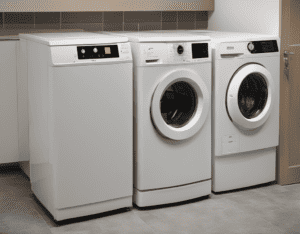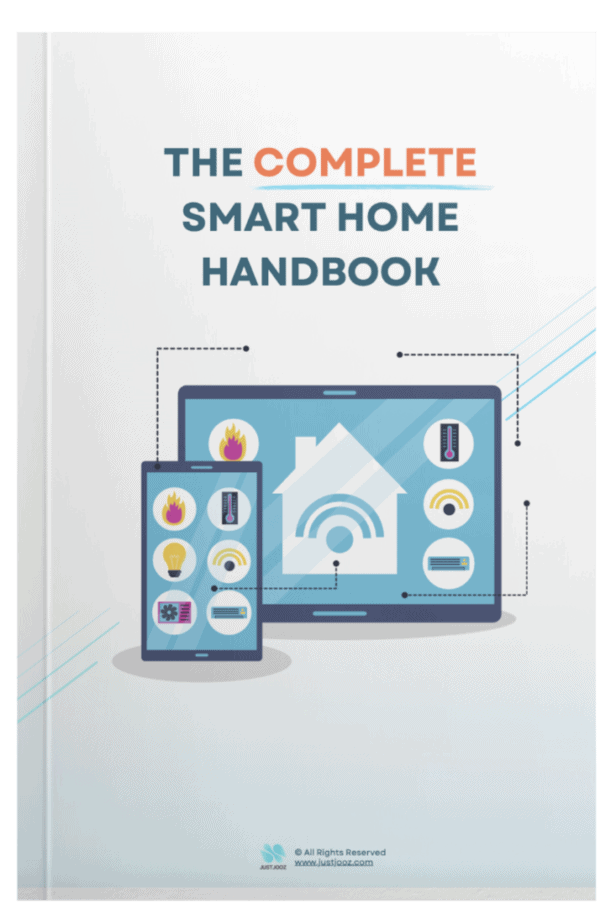What is Zigbee? 6 Things Beginner’s Should Know!
We’re reader-supported; we may earn a commission from links in this article.
Have you ever heard of Zigbee and wondered what it is and how it works?
Welcome to the world of Zigbee, a wireless technology that connects smart devices in homes and outside homes.
In this beginner’s guide, we’ll explore what Zigbee is, how it works, and its various applications.
By the end of this article, you’ll clearly understand this wireless communication protocol and its potential.
Let’s get into it!
1. What is Zigbee?
Zigbee is a wireless communication standard that has gained significant attention recently, particularly in the Internet of Things (IoT) context.
It facilitates communication between various devices, allowing them to connect and interact seamlessly.
Zigbee operates on the 2.4 GHz frequency band and is known for its efficiency, low power consumption, and reliability.
a. Zigbee Basics
Zigbee is a wireless communication standard for low-power, short-range, and reliable device communication. It operates on the 2.4 GHz frequency band and is known for its efficiency in connecting various smart devices, making them work seamlessly together.
In a Zigbee network, there are three primary types of devices: Zigbee end devices, Zigbee routers, and Zigbee coordinators. Zigbee end devices are the endpoints that interact with users or sensors, like smart light bulbs.
b. How Zigbee Works
Zigbee uses a mesh networking topology, where each device in the network can communicate with other devices, creating a self-healing and robust network. It employs low-power radios and consumes minimal energy, making it ideal for battery-operated devices.
Zigbee operates on the Zigbee radio frequency, utilizing Zigbee chips that adhere to Zigbee specification and Zigbee standard.
My advice is to pick the best Zigbee hub available on the market today.
This wireless Zigbee protocol is renowned for its energy efficiency, making it a top choice for battery-operated devices. Furthermore, Zigbee’s wireless control capabilities extend beyond simple smart lighting, finding applications in home automation, industrial automation, and even healthcare.
2. Zigbee vs. Other Technologies
Zigbee is just one of many wireless technologies available today. Let’s compare it to some of its famous counterparts.
Regarding wireless technologies, Zigbee stands out as a unique contender with its own set of advantages and disadvantages when compared to other popular technologies like Wi-Fi, Bluetooth, and Z-Wave. Let’s explore how Zigbee compares to these technologies:
a. Zigbee vs. Wi-Fi
i. Zigbee:
- Low Power: Zigbee is designed for low-power applications, making it ideal for battery-operated devices that need energy conservation.
- Short Range: It operates over relatively short distances, typically within a range of a few meters to around a hundred meters.
- Mesh Networking: Zigbee employs mesh networking, allowing devices to relay signals through neighboring devices, enhancing network reliability.
- Application: Primarily used in IoT applications, smart homes, industrial automation, and healthcare.
ii. Wi-Fi:
- High Data Rates: Wi-Fi provides high-speed internet access, suitable for data-intensive tasks like streaming and web browsing.
- Medium to Long Range: Wi-Fi networks can cover substantial distances, making it suitable for home and office environments.
- Point-to-Multipoint: Wi-Fi is more of a point-to-multipoint technology, with one central router connecting multiple devices.
- Application: Mainly used for internet connectivity at home and in public places.
b. Zigbee vs. Bluetooth
i. Zigbee:
- Versatility: Zigbee is versatile and suitable for various applications, including smart homes, industrial automation, healthcare, and agriculture.
- Mesh Topology: Like Bluetooth, Zigbee also supports a mesh topology, enabling devices to communicate with one another via multiple routes.
- Low Power: Zigbee’s focus on low power consumption makes it ideal for battery-operated devices in IoT settings.
- Application: Used in various applications, especially when low power and reliability are crucial.
ii. Bluetooth:
- Short Range: Bluetooth typically has a shorter range than Zigbee, making it suitable for personal area networks (PANs).
- Consumer Electronics: Bluetooth is commonly found in electronics such as headphones, speakers, and smartphones.
- Low Power (Bluetooth Low Energy): Bluetooth Low Energy (BLE) is designed for low-power applications like Zigbee.
- Application: Widely used for connecting consumer devices and personal peripherals.
c. Zigbee vs. Z-Wave
i. Zigbee:
- Versatility: Zigbee has a broader range of applications and a more extensive ecosystem, making it versatile for various device types.
- Interoperability: Zigbee devices from different manufacturers can often work together, promoting interoperability.
- Mesh Networking: Like Z-Wave, Zigbee employs a mesh networking approach for enhanced reliability.
- Application: Commonly used in smart homes, industrial automation, healthcare, and agriculture.
ii. Z-Wave:
- Specialized: Z-Wave is primarily focused on home automation and smart home applications.
- Interoperability: Z-Wave is known for its strict interoperability standards, ensuring that devices from different manufacturers work seamlessly.
- Frequency: Z-Wave operates on different frequency bands in various regions, potentially reducing interference.
- Application: Predominantly used in smart home automation.
3. Applications of Zigbee
Zigbee’s versatility and ability to provide reliable, low-power, short-range communication have led to its adoption in various applications.
Here are some of the key areas where Zigbee technology is making a significant impact:
a. Smart Homes
Zigbee is extensively used in smart home applications. It connects various devices like smart lights, thermostats, door locks, sensors, and more.
Users can create interconnected and automated environments, enabling devices to communicate and coordinate actions seamlessly.
b. Industrial Automation
Zigbee is ideal for industrial automation, facilitating communication between machines and equipment.
It monitors and controls industrial processes, optimizes production efficiency, and reduces downtime.
c. Healthcare
Zigbee-enabled medical devices simplify patient monitoring and data collection in healthcare settings.
It allows for real-time tracking of patient health metrics, enhancing the quality of healthcare services.
d. Agriculture
In agriculture, Zigbee is used for crop monitoring, irrigation control, and livestock tracking.
It helps farmers optimize resource usage, increase yield, and manage their farms more efficiently.
e. Home Automation and Security
Zigbee-based security systems offer homeowners a reliable way to monitor and secure their properties.
Sensors and cameras can communicate wirelessly, triggering alarms or sending alerts in case of suspicious activities.
f. Asset Tracking
Zigbee is employed for asset tracking applications in warehouses and logistics.
It helps in monitoring the movement and status of assets, reducing losses and improving inventory management.
g. Environmental Monitoring
Zigbee sensors can be deployed for environmental monitoring, measuring factors like temperature, humidity, and air quality.
This data is valuable for maintaining optimal conditions in buildings or outdoor environments.
h. Building Automation
Zigbee is used in building management systems for controlling lighting, HVAC (heating, ventilation, and air conditioning), and access control.
It enables energy-efficient and responsive building automation solutions.
i. Retail and Inventory Management
Retail stores use Zigbee for inventory management and tracking products within the store.
It aids in ensuring stock levels are maintained, and products are readily available to customers.
4. Advantages of Zigbee
Zigbee offers a range of advantages that make it a preferred choice for various wireless communication applications, particularly in the Internet of Things (IoT) and smart device ecosystems. Here are some key advantages of Zigbee:
a. Low Power Consumption
One of Zigbee’s most significant advantages is its low power consumption. It’s designed to operate efficiently on battery-powered devices, extending the battery life significantly.
This feature makes Zigbee an excellent choice for devices that need to run for extended periods without frequent battery replacements, such as sensors and smart locks.
b. Mesh Networking
Zigbee employs a mesh networking topology, where each device can communicate with multiple neighboring devices. This creates a self-healing network where data can be relayed through alternative routes if one device fails.
Mesh networking enhances network reliability and coverage, particularly in larger deployments.
c. Short-Range Communication
Zigbee is optimized for short-range communication, typically within a range of a few meters to around a hundred meters. This is ideal for applications where devices are in close proximity to each other.
Short-range communication reduces interference and conserves energy, making Zigbee suitable for localized networks.
d. Versatility
Zigbee’s versatility allows it to be used in various applications, including smart homes, industrial automation, healthcare, agriculture, and more.
It can connect various devices, promoting interoperability and ease of integration.
e. Scalability
Zigbee networks are highly scalable, accommodating both small and large deployments. Whether it’s a smart home or an industrial facility, Zigbee can adapt to the network’s size.
This scalability makes Zigbee suitable for applications with changing requirements or growth potential.
f. Interference Tolerance
Zigbee operates in the 2.4 GHz frequency band, which can be crowded with other wireless devices and networks. However, Zigbee’s interference tolerance mechanisms help mitigate interference issues.
This ensures that Zigbee devices can maintain reliable communication even in environments with multiple wireless signals.
g. Cost-Efficiency
Zigbee is cost-effective in terms of both hardware and deployment. The chips and modules required for Zigbee devices are often affordable.
Additionally, Zigbee’s low power consumption contributes to cost savings by reducing the need for frequent battery replacements.
h. Security Features
Zigbee provides security features to protect data transmission and device authentication. While security levels may vary across device manufacturers, Zigbee can implement strong security measures.
This is crucial for ensuring the integrity and privacy of data transmitted over Zigbee networks.
i. Standardization and Interoperability
Zigbee Alliance, the organization behind Zigbee, promotes standardization and interoperability among Zigbee devices from different manufacturers.
This means that Zigbee devices are more likely to work together seamlessly, reducing compatibility issues.
j. Enhanced Reliability
Zigbee’s mesh topology and built-in mechanisms for data redundancy enhance network reliability. Even if one device or connection point fails, communication can continue through alternative routes.
This is critical in applications where uninterrupted communication is vital.
5. Challenges and Limitations
While Zigbee has many strengths, it also faces challenges and limitations.
a. Limited Data Rate
Zigbee’s focus on low power means it has lower data rates than Wi-Fi or Bluetooth, making it unsuitable for high-bandwidth applications.
b. Interference Issues
Operating in the crowded 2.4 GHz band can lead to interference problems in densely populated areas.
c. Security Concerns
Zigbee’s security features vary across devices and manufacturers, potentially leaving vulnerabilities if configured incorrectly.
6. Future of Zigbee
Despite its challenges, Zigbee continues to evolve. Future versions aim to improve data rates, security, and interoperability, making it an even more attractive option for various applications.
The future of Zigbee holds promise and evolution as it continues to adapt to changing technological landscapes and the growing demands of the Internet of Things (IoT). Here are some key trends and developments expected in the future of Zigbee:
a. Increased Data Rates
Zigbee specification has traditionally focused on low-power, low-data-rate applications. However, there is a growing need for higher data rates in some IoT scenarios. Future Zigbee standards may incorporate improvements to accommodate these demands while maintaining energy efficiency.
b. Improved Security
As IoT devices become more prevalent, security concerns grow. Future versions of Zigbee are likely to include enhanced security features and standardized security protocols to better protect data and devices from potential threats.
c. Enhanced Interoperability
The Zigbee Alliance is committed to promoting interoperability among Zigbee devices from different manufacturers. Future Zigbee standards will likely continue this trend, making it easier for consumers to integrate devices from various brands into their networks.
d. Standardization with IP Protocols
Zigbee’s Internet Protocol (IP) connectivity adoption is expected to expand. This will enable seamless integration of Zigbee Protocols networks with the broader internet, enhancing the ability to control and monitor IoT devices remotely.
e. Integration with 5G Networks
As 5G networks become more widespread, Zigbee may find new opportunities to integrate with high-speed cellular connectivity. This could be particularly valuable for applications requiring short-range communication (Zigbee) and long-range connectivity (5G).
f. Multi-Protocol Support
Future Zigbee devices may incorporate multi-protocol support, allowing them to communicate with wireless technologies like Wi-Fi, Bluetooth, and IoT standards like LoRaWAN. This will increase the versatility of Zigbee networks.
g. Edge Computing Capabilities
Zigbee networks at the edge of the IoT ecosystem may gain more intelligence and processing power. This could enable edge devices to perform data processing and decision-making locally, reducing latency and dependence on centralized cloud servers.
h. Greater Adoption in Industrial IoT (IIoT)
Zigbee’s reliability and low-power characteristics make it well-suited for industrial automation and IIoT applications. Its adoption in these sectors is expected to grow as industries embrace the benefits of IoT technology.
i. Energy Harvesting Solutions
Future Zigbee devices may incorporate energy harvesting technologies, allowing them to generate power from their surroundings (such as solar or kinetic energy). This would further extend their battery life and reduce maintenance requirements.
j. Customizable Profiles
Zigbee’s flexibility may lead to more customizable profiles, enabling businesses and consumers to tailor Zigbee networks to their needs.
On the other hand, Zigbee routers form the backbone of the Zigbee mesh network, relaying data between end devices and coordinators. Finally, the Zigbee coordinator is the central hub that manages the entire network, often found in smart hubs or gateways.
k. Environmental Monitoring and Sustainability
Zigbee will likely play a significant role in environmental monitoring and sustainability efforts. IoT devices using Zigbee can help collect climate, air quality, and resource usage data, contributing to sustainable practices.
l. Smart City Initiatives
Zigbee’s adaptability to various applications and low power consumption make it suitable for smart city deployments. It may be increasingly integrated into urban infrastructure for tasks like smart lighting, waste management, and traffic control.
Moreover, Zigbee has evolved to include Zigbee IP, which enables internet connectivity, allowing for remote monitoring and control of Zigbee devices. This enhancement has broadened Zigbee’s scope to integrate seamlessly with other wireless networks and the broader Internet of Things (IoT) ecosystem.
Conclusion
In this beginner’s guide, we’ve delved into the world of Zigbee, exploring its basics, applications, advantages, and limitations. Zigbee’s role in connecting the Internet of Things (IoT) continues to grow, offering us a more connected and automated future.
When integrated into a smart light network, each Zigbee end device can communicate seamlessly with the others, allowing users to control and automate their lighting systems effortlessly.
One notable application is in the realm of smart home automation.
In this context, a Zigbee hub acts as the central coordinator, while a Zigbee router and end devices form a mesh network.
FAQs
Q: Is Zigbee the same as Wi-Fi?
No, Zigbee is not the same as Wi-Fi. While both are wireless communication technologies, Zigbee is designed for low-power, short-range applications, while Wi-Fi is primarily used for high-speed internet access.
Q: Can Zigbee be used for long-range communication?
No, Zigbee is not suitable for long-range communication. It is designed for short-range applications within a few meters to a hundred meters, depending on the specific implementation.
Q: How secure is Zigbee?
Zigbee’s security varies depending on device manufacturers and configurations. It offers security features, but ensuring proper setup to minimize vulnerabilities is essential.
Q: Is Zigbee compatible with other smart home devices?
Yes, Zigbee is compatible with many smart home devices. It has a broad ecosystem of products that can work together to create a connected and automated home environment.
Q: What are some popular Zigbee-compatible products?
Some popular Zigbee-compatible products include Philips Hue smart bulbs, Samsung SmartThings hub, and Amazon Echo Plus. These devices can be integrated into a Zigbee network for smart home automation.

Justin Chia
Justin is the author of Justjooz and is a data analyst and AI expert. He is also a Nanyang Technological University (NTU) alumni, majoring in Biological Sciences.
He regularly posts AI and analytics content on LinkedIn, and writes a weekly newsletter, The Juicer, on AI, analytics, tech, and personal development.
To unwind, Justin enjoys gaming and reading.








